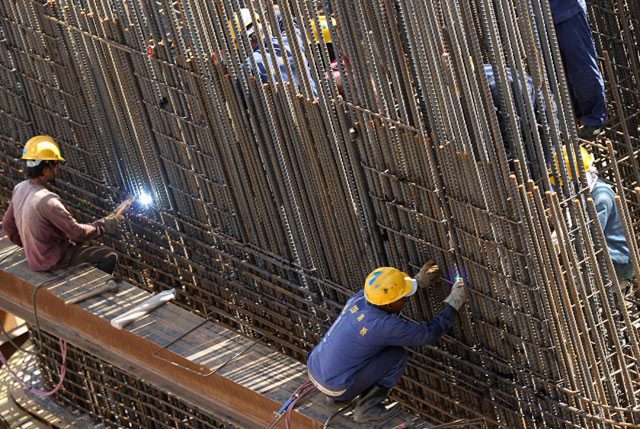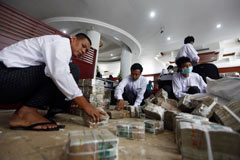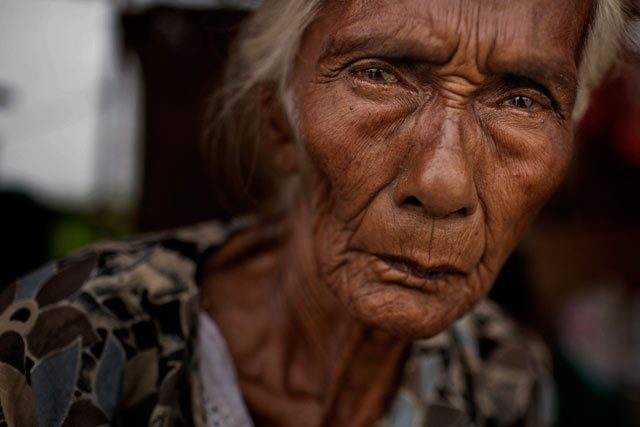Myanmar needs to seize its momentum and implement resolute economic reforms if it hopes to support an ageing population
By Christian Vits
Like so many of its neighbours, Myanmar is facing the problem of an ageing population. However, given that the country is starting from one of the lowest levels of development worldwide, Myanmar might find this grey area harder to tackle if expectations for an increasingly vibrant economy are not met. The country “risks getting old before the incomes and living standards of its people can significantly improve”, Mario Pezzini, development centre director at the Organisation for Economic Cooperation and Development (OECD) said in July when presenting the organisation’s latest country study. “Myanmar is at a crossroads: It has to capitalise on its numerous assets and seize the momentum for development. The demographic dividend needs to be reaped now and the potential of the economy lifted by productivity enhancing reforms,” he added.

Since 1974, fertility has declined by more than 20% in 155 developing countries and by more than half in 40 of them, according to the United Nations’ population division. In 2005, children aged up to 14 represented almost a third of Asean’s population, while those aged 65 and older made up just 5%. By 2050, it is estimated that the share of youngsters will shrink to lower than that of the elderly, which should have reached 18%. Most worryingly for Myanmar, of countries with fertility levels greater than or equal to four children per woman between 1975 and 1980, it is one of the states that recorded the fastest fertility reductions worldwide, according to UN statistics.
Myanmar’s population will continue to grow in coming decades, which should keep economic growth rates high, but the structure of its population shows that it will start ageing earlier than other countries in the region that have similar income levels.
Business people from all over the world have poured into Myanmar since its president and former general Thein Sein began political and economic reforms in March 2011 after almost five decades of military rule. Following by-elections last year, which carried opposition leader Aung San Suu Kyi’s National League for Democracy to parliament, the EU and the US lifted most of their previously imposed sanctions. Strategically located between the world’s two most-populated states, India and China, and blessed with abundant resources and a huge, cheap workforce, the ingredients for another Southeast Asian success story seem to be in place.
Myanmar may more than quadruple the size of its economy to over $200 billion by 2030, creating more than ten million additional non-agricultural jobs, the McKinsey Global Institute, a think tank of the management consulting firm, wrote in a report published in June. The country may achieve annual growth rates of 8% “if it takes action to tap the full potential” of its economy, according to the report.
“The market is booming. We’ve seen a dramatic increase in demand for high quality and move-in ready office space,” said Travis Baker, director of business development at Scipio Services, a Yangon-based real estate advisory company. “Serviced offices across town are full, and other high quality office spaces are in short supply. The bottleneck won’t be overcome before at least the middle of next year.”
Prices for office rentals and hotel rooms have been skyrocketing in the past two years, outstripping the price level in cities such as Bangkok and converging to those in Singapore.
“I don’t see how much higher market prices could go without deterring significant numbers of new entrants,” Baker added.
Nonetheless, numerous sectors could provide the platform for Myanmar to tackle the ageing problem. Promising areas include: the oil and gas industry; the services sector, in particular commercial and residential construction; financial services; retail trade; and communications. Myanmar had 5.44 million mobile phone subscribers as of December, equivalent to a 9% penetration rate, compared with 70% in Cambodia and 87% in Laos.
Tourism is also booming, with visitor numbers reaching a record one million international tourists last year, and arrivals forecast to jump sevenfold by 2020. Corresponding tourism receipts should be worth more than $10 billion and provide up to 1.4 million jobs in the industry, according to the Asian Development Bank.
At the same time, the challenges remain widespread. Based on the experience of other Asian countries, Myanmar could need about $650 billion in total investment to achieve its growth potential between 2010 and 2030, the McKinsey analysis suggests. The country needs to invest $320 billion in its infrastructure alone to achieve growth rates of 8% in the same timespan. Currently, power cuts are common, and only 28% of the rural population has access to electricity while the country’s large cities may have to absorb 10 million additional people.
“Myanmar has a large opportunity for development and sustained growth, but the road ahead is not easy. Action in virtually every area of economic development, as well as governance itself, is essential,” the McKinsey Institute wrote. “Myanmar’s potential is formidable, but so are the challenges.”
Some business people “consider Myanmar the last untouched paradise in Asia”, said Benjamin Leipold, director of Asia-Pacific at the Association of German Chambers of Commerce and Industry in Berlin, which will open an office in Yangon next month. However, he is sceptical about the prospect of the enormous interest in the country translating into equally high investments over the short term.“There’s considerable potential for machinery exports such as packing machines. But there’s also a lack of infrastructure, an unclear legal framework and, last but not least, you face corruption – all this is not conducive for investments,” he said.
“A key bottleneck is the weak physical infrastructure, with severe shortages of power generation capacity and key transport infrastructure such as ports, roads and rail,” said Rajiv Biswas, Asia-Pacific chief economist at IHS Global Insight in Singapore. “The lack of vocational training and tertiary educational systems is reflected in low skill levels in the workforce, which is a major obstacle to economic development. Political risk also remains very high in Myanmar, as international pressure for further political reforms could create deep rifts within the government.”

from 2010 to 2013
Photo by Reuters
As well as corruption, organised smuggling to Thailand, China and Bangladesh is among the problems that threaten to reduce government revenues. Transparency International’s corruption perception index ranks Myanmar 172nd out of 176 states.
With about a quarter of citizens living below the poverty line – although the government aims to reduce this figure to 16% by 2015 – the challenge is to shape economic reforms in a way that the resulting development benefits the population at large and not just foreign companies. In terms of education, Myanmar has one of the world’s lowest average durations of schooling at just four years. Its teacher-to-pupil ratio is about one teacher for every 30 schoolchildren, according to the McKinsey report. That compares to 16 children in Indonesia and 13 in Malaysia. To address the shortages, the government has significantly increased budget allocations for education. In addition, the number of skilled government officials has to be increased in order to reduce business impediments and to ensure the rule of law.
If the country fails to implement the next steps of reform, problems such as an ageing society may limit economic progress and its effects on wealth.
Considering the numerous obstacles, Leipold feels that it may take a while before the country could be comparable to other Asean states. “It might be a bit over the top to expect Myanmar’s economy to boom so much over the next few years,” he said.
Given the aforementioned drop in fertility rates, the population’s ageing process will start in 2017 according to OECD. Time, it seems, is very much of the essence.
Also view:
“Fade to grey” – Growing old before it grows rich, Southeast Asia must act now to avoid becoming disabled by a rapidly ageing population
“Twilight fears” – Cambodia’s first retirement home is an indicator of a looming crisis facing Southeast Asia


